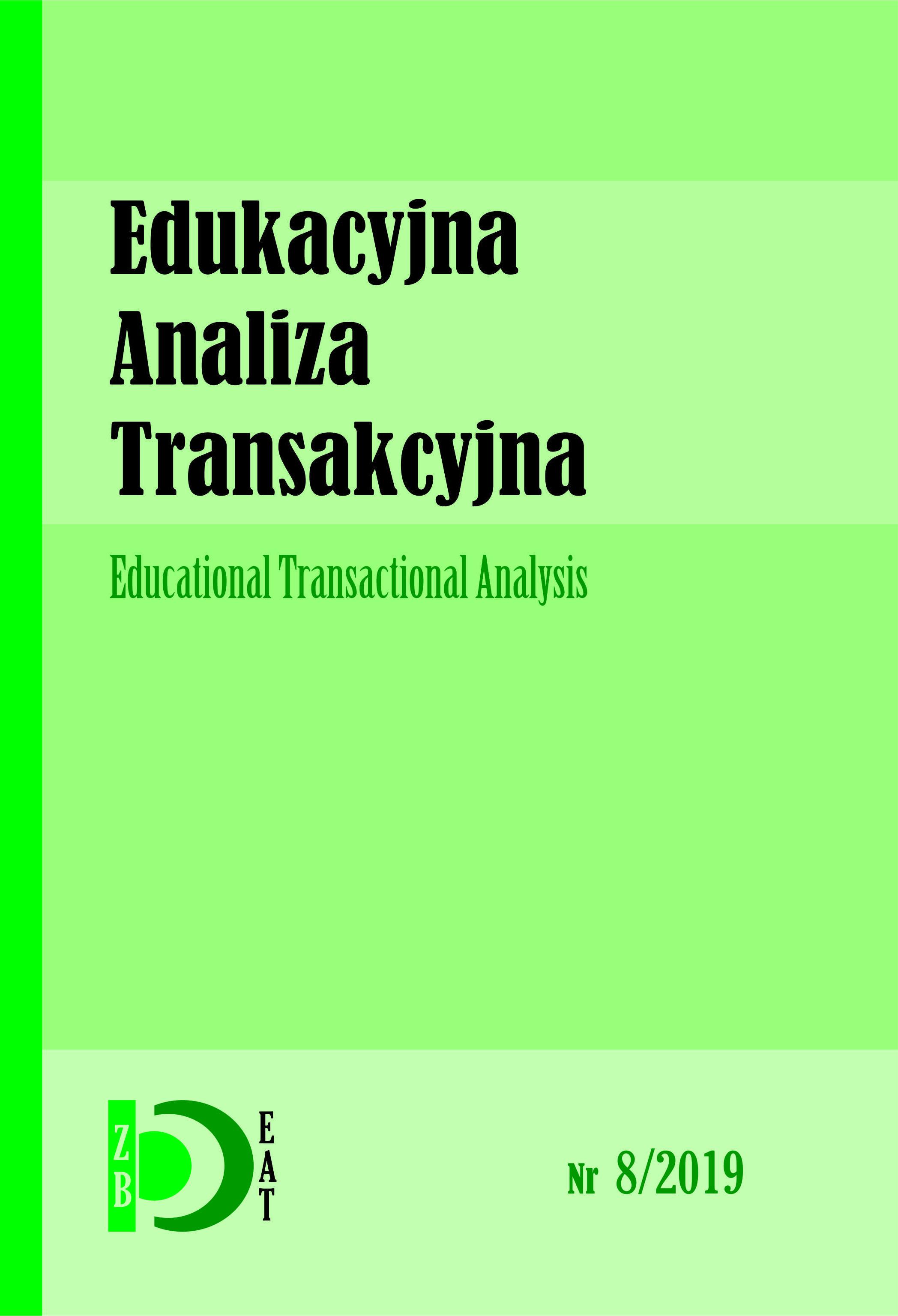Against injunctive messages - about defiant decision in response to injunctive message
- Authors
-
-
Agnieszka Woś-Szymanowska
Uniwersytet Medyczny im. Karola Marcinkowskiego w Poznaniu
-
- Keywords:
- injuctive message, decision, defiant decision, despair decision
- Abstract
-
We accept injunctive message through an unaware decision (Goulding, Goulding, 1997, p. 13). It’s not always so obvious. We have two ways of accepting injunctive message - a despair and defiant decision. When we make a despair decision - we accept the injunctive message and live limiting our functionality in some aspect. However, when we make a defiant decision, we act in accordance with the principle of "I will show you!" and in an excessive way we prove to ourselves and others, that nothing similar concern us. Although this form of accepting injunctive message is slightly healthier, it is still destructive and a person who is experiencing it is influenced by it and works under the urge to prove something. This is a defiant decision, and excess in some aspect, is the most important clue that can help identify it. (McNeel, 2010, 159-169).
- Downloads
-
Download data is not yet available.
- Author Biography
- References
-
Berne, E. (1972). What do you say after you say hello? London: Corgi Books.
Goulding, M., Goulding, R. (1997). Changing lives through redecision therapy. Revised and Updated Edition. New York: Grove Press.
McNeel, J. (2010). Understanding the Power of Injunctive Messages and How They Are Resolved in Redecision Therapy. Transactional Analysis Journal, 40(2), 159–169, https://doi.org/10.1177/036215371004000211.
Stewart, I. Joines, V. (2016). Analiza Transakcyjna dzisiaj. Poznań: Dom Wydawniczy REBIS.
- Downloads
- Published
- 2019-12-31
- Issue
- No. 8 (2019)
- Section
- Transactional Analysis in Other Fields
- License
-
AUTHOR'S STATEMENT
I am aware that the Educational Transactional Analysis journal is published under a Creative Commons license - Attribution (https://creativecommons.org/licenses/by/4.0/legalcode).
By submitting the article, I agree to make it available under this license
How to Cite
Similar Articles
- Kateryna Bulhakova, Zarina Sevalneva, Work on the somatic script with the use of the favourite childhood fairy tale , The Educational Transactional Analysis: No. 4 (2015)
- Dorota Gębuś, dr, The role of parental do’s and dont’s in shaping individual’s creativity. Sources of creativity inhibitors from the perspective of transactional analysis , The Educational Transactional Analysis: No. 5 (2016)
- Anna Pierzchała, dr, Transactional Injunctions and Counterinjunctions of the Script in the Hidden School Program , The Educational Transactional Analysis: No. 6 (2017)
- Agata Szekiełda, mgr, Korepetycje w podejściu relacyjnym: uczenie się i nauczanie jako proces terapeutyczny. Refleksja w oparciu o model analizy transakcyjnej , The Educational Transactional Analysis: No. 7 (2018)
You may also start an advanced similarity search for this article.
Most read articles by the same author(s)
- Agnieszka Woś-Szymanowska, mgr, Process Communication Model – an effective tool supporting education , The Educational Transactional Analysis: No. 7 (2018)

